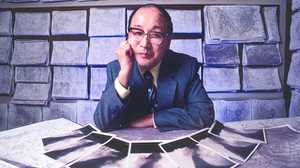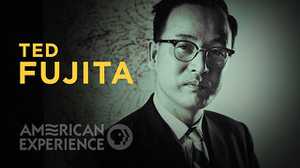The Thrill of the Chase
Why are Americans so obsessed with tornadoes? A brief tour of twister culture has the answer.

Since the mid-1990s, tourists have paid storm-chasers to take them to places in the American Great Plains where they expect to see tornadoes. Why, a reasonable follow-up question might go, would anyone want to get so close to something so destructive? These tourists, a 2017 anthropological study found, characterize their relationship to severe weather as a “passion,” describing their feelings about tornadoes using words like “enjoyment,” “fascination” and “love.” Some of the anthropologist’s informants seem spiritually moved by tornadoes—one tourist called the storms “humbling”—but the main motivator seemed to be simple: Twisters are cool.
America has many more tornadoes than any other country, and its citizenry has long regarded twisters with a mix of fear, awe and thrilled pleasure. Fast-moving and dramatic, tornadoes have been both catalysts for American religious thought and irresistible centerpieces for popular entertainment. Understanding their audience, in their advertising materials storm-chasing outfits use phrases like “jaw-dropping,” “dazzling,” “amazing” and “breathtaking” to describe the kinds of storms tourists could expect to see. One needn’t be an extreme-weather enthusiast, however, to take a brief and far-less hazardous tour: of the culture tornadoes have inspired and of the transformation of American society’s feelings about these storms from fear to excitement.

European colonists in the future United States were fascinated—and sometimes horrified—by their new land’s weather. One of the major tools they used to explain all the hurricanes, blizzards and tornadoes that beset their fragile settlements was theology. The Puritans, writes historian Peter J. Thuesen in his book Tornado God: American Religion and Violent Weather, “took for granted that the more pious a person or society, the less harm they would suffer from violent weather.” Puritan clergyman Increase Mather’s Essay for the Recording of Illustrious Providences, published in 1684, described a tornado—he called it a “Whirl-wind”—that hit Massachusetts in 1680. (Americans didn’t generally use the word “tornado” until the nineteenth century.) The eyewitness reports of that tornado that Mather gathered for his text emphasized the seeming randomness of the fortunes of those who encountered it.
Farmer Matthew Bridge described grabbing a “Boy with him” and deciding to “ly flat upon the Ground behind some Bushes,” while “thick Cloud and Pillar passed so near them as almost to touch their feet, and with its force bent the Bushes down over them, and yet their lives were preserved.” But “John Robbins,” a “Servant Man,” was not so lucky, as he was “suddenly slain,” “his Body being much bruised, and many Bones broken by the violence thereof.” In his essay, Mather refrains from directly blaming those killed by the storm for their misfortune; however, Thuesen notes in his book that in a sermon addressing the incident that Mather gave around this time, the clergyman didn’t hold back from crediting “God’s wrath” for the disaster.
Increase Mather’s son, Cotton Mather, articulated the moral view of storms further. In a 1702 sermon, the younger Mather wrote that tornadoes and storms were the works of Satan, but that God took part in their development, allowing the devil to do his worst: “Satan, let loose by God, can do wonders in the air; he can raise storms, he can discharge the great ordnance of heaven, thunder and lightning; and by his own art can make them more terrible and dreadful, than they are in their own nature.” Tornadoes, then, were an instructional tool and a terrifying blessing, meant to give Americans the gift of knowledge about their sins.
Although many American colonists continued to perceive weather as a spiritual tutor, this religiously informed view of tornadoes mingled as early as the middle of the 18th century with acute scientific interest in their singular power. After Benjamin Franklin read an account of a tornado that went through Rome in June 1749, he began to investigate the possible scientific underpinnings of American waterspouts and tornadoes. It was Franklin’s correspondent and fellow natural scientist Cadwallader Coldren who memorably argued that perhaps shooting a cannonball through a waterspout could “vent” and collapse the formation, which would anticipate the 20th-century turn toward attempts at prediction and control of tornados. (“This meteorological version of bloodletting has a certain twisted logic to it,” acknowledges tornado historian T.P. Grazulis.)
In the Early Republic, the influence of Romantic ideas about the terrible and wonderful power of nature became clearer in American tornado culture. Some people began to write about tornados in terms of awe, and to produce art that explored the phenomenon’s inherent beauty, while also moralizing about its meaning. Hudson River School painter Thomas Cole’s 1831 work, Tornado in an American Forest, used the interplay of dark and light in the sky to great dramatic effect. In May of 1840, the second most-deadly American tornado killed 317 in Natchez, Mississippi and present-day Vidalia, Louisiana (the fatalities were likely even greater, since there was no accounting of the number of enslaved people who died on plantations along the river). The editor of the Natchez Free Trader wrote of the aftermath in terms of art: “Genius cannot imagine, poetry itself cannot fill up a picture that would match the ruin and distress that everywhere meets the eye.”

The tornadoes that took place when American mass culture was in its infancy nonetheless found their way into the entertainments of the time. In the antebellum era, Dr. Montroville Wilson Dickeson, a physician who gave public lectures on the natural sciences, commissioned a monumental work, “Panorama of the Monumental Grandeur of the Mississippi Valley,” from painter John J. Egan. These very long paintings were meant to be viewed sequentially, in conjunction with a lecture; the whole experience was a (much creakier) precursor to cinema. Egan’s panorama, completed ca. 1850, was 7 ½ feet tall and 348 feet long. Like a lot of 19th-century popular natural history, the panorama offered a mix of facts and thrills. Curator Nenette Luarca-Shoaf reports that the journey featured many scenes of violence and its aftermath: skirmishes between the Natchez Indians and French colonists; conflicts between man and wild animals; and, of course, the destruction left behind after the passage of a tornado. These storms fit perfectly into a vision of the American heartland that was dramatic, vivid and sensational.

After the third most deadly tornado in American history hit St. Louis in 1896, killing at least 255 and rendering 5,000 people homeless, almost 150,000 visitors came to town. This was the place where, historian Ted Steinberg argues in his book Acts of God: The Unnatural History of Natural Disaster in America, we can best see “the rise of natural disaster as a form of mass entertainment.” Gawkers took trains in to see the sights, crushing a city uniquely unprepared to host them. Serving out-of-town readers eyeballing the events from their armchairs, newspapers and magazines covered the aftereffects with a relentless hunger for details. Harper’s Weekly ran pages and pages of pictures and drawings; not to be outdone, Leslie’s Weekly offered a special edition: “The St. Louis Disaster.” The St. Louis story was not the only natural disaster that became pop culture during this time. In 1905, for example, Coney Island offered multiple attractions recreating famous natural disasters: the Johnstown Flood (1889); the Galveston Hurricane (1900); the eruption of Martinique’s Mount Pelee (1902).
In the first half of the 20th century, tornadoes became permanently associated with the Midwest in the American mind. The Tri-State Tornado of 1925—the deadliest tornado event in American history—was instrumental in this shift. Because this storm, which killed 695 people in Missouri, Illinois, and Indiana, included so many schoolchildren among its dead, local ministers processing the aftermath explicitly encouraged the faithful to perceive the storm as an inscrutable event‚ not a judgment. The event was a tipping point “toward new ways of thinking about God, nature and American chosenness,” historian Thuesen writes. At an ecumenical memorial service, one Illinois minister preached: “It was not God who hurt Murphysboro’s babies.” Regionalist painter John Steuart Curry’s Tornado Over Kansas (1929), which depicted a farm family rushing to its storm cellar with three children helping bring cats and dogs to safety, visually referenced the Tri-State event for viewers with it fresh in their memories.

In 1939, The Wizard of Oz featured what was arguably the most famous Midwestern tornado in American popular culture. This fictional twister is a transformative and terrifying weather event that fulfills key narrative functions: it kills a witch and magically thrusts Dorothy into a new world. The Wizard of Oz’s tornado is the ultimate example of storm as deus ex machina, and the film’s makers knew how important the sequence would be. The scene was created as a miniature, using what the movie’s special effects artist A. Arnold Gillespie called a “giant wind sock out of muslin,” a crane, a motor and a scaled-down version of the complete set, created at no small cost. “No one questioned the price,” wrote film historian Aljean Harmetz, in her history of the making of the film. “If [studio head] L.B. Mayer was hardly extravagant, he had a healthy respect for the high cost of magic.”

Since the 1930s, American tornadoes have been less deadly: the country has much better early-warning systems, fewer people live in rural areas and tornado activity has largely shifted from the Southeast to the sparsely-populated Great Plains. This reduction in the amount of human impact, along with the general secularization of American society, has meant that American pop culture now emphasizes the awesomeness of the storms over their moral meaning. After the 1974 Super Outbreak, which spawned 148 tornadoes that killed 315 people and affected communities in 13 states, even the U.S. Information Agency released a short documentary on the event that had a title better suited to a B movie: “Day of the Killer Tornadoes.”
Storm-chasing—a quasi-scientific, thrill-seeking activity that most Americans found out about via the 1996 blockbuster film Twister, starring Helen Hunt and Bill Paxton as a couple of tornado researchers chasing storms—is still incomprehensible to many who don’t practice it. But knowing this history of American thought about tornadoes’ awesome power may make it somewhat easier to understand. “I find it difficult to explain to someone who hasn’t chased what compels us to seek pleasure from risk,” wrote Jennifer Henderson, a scholar and hobbyist storm-chaser, in a 2013 meditation on the death that year of storm-chaser Tim Samaras. “Chasing remains for me a form of religious practice, an encounter with the Wordsworthian sublime,” Henderson explains, characterizing her feelings while chasing as “a sense of exposure and revelation tightly coupled.”
"Almost in spite of myself,” she concludes, “I know I’ll join the chase again.”

Rebecca Onion is the author of Innocent Experiments: Childhood and the Culture of Popular Science in the United States. She holds a Ph.D in American Studies from the University of Texas at Austin and is a staff writer at Slate.









